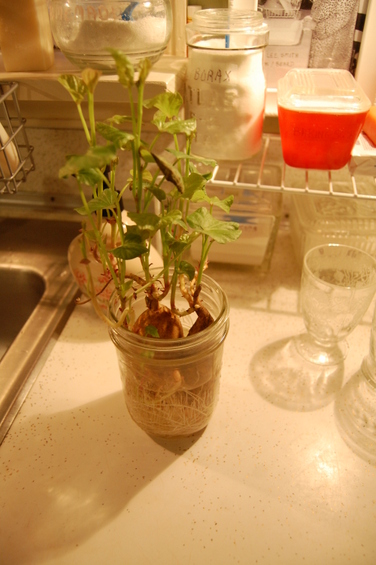
We had a few sweet potatoes left over from the potatoes we grew last year so I put a few in water to grow some slips.
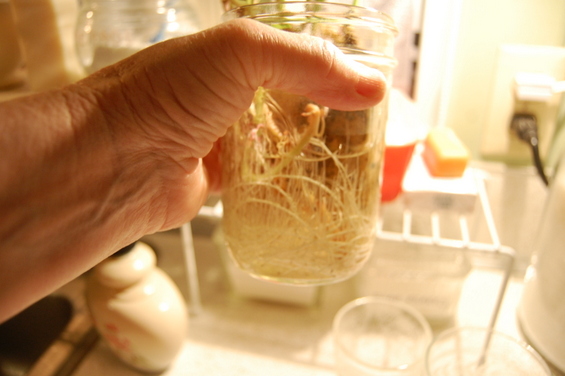
You would think with all these roots in the jar it would be ready to plant but sweet potatoes are a bit different.
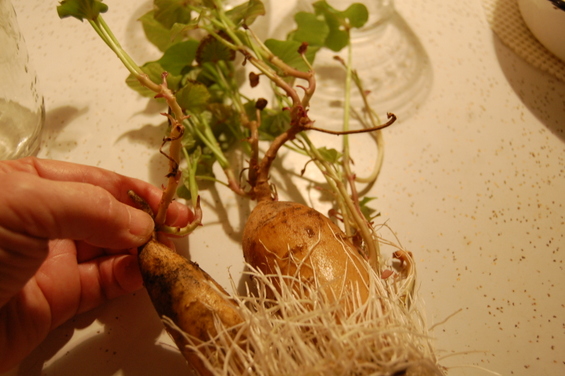
We want to pinch off the stems that are growing from the sweet potato and make slips out of them.
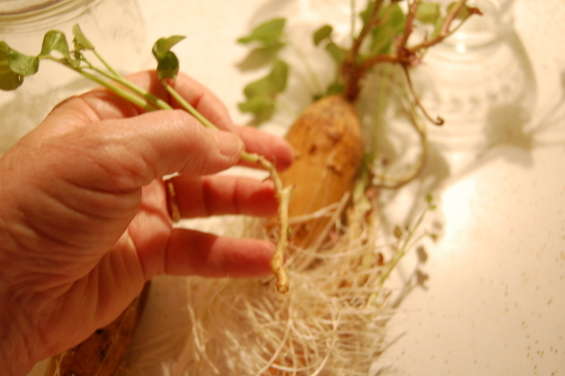
This would be a slip and now I will root this and when it has roots I will plant this in the dirt, not the original sweet potato. The slips make sweet potatoes.

So I put the original sweet potatoes back in the original jar on the left and put the slips that had roots in one jar and the ones that did not in the other.
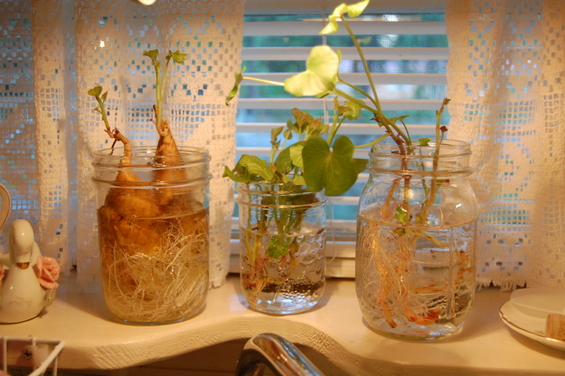
Now they will sit on our kitchen window ledge to grow roots ...
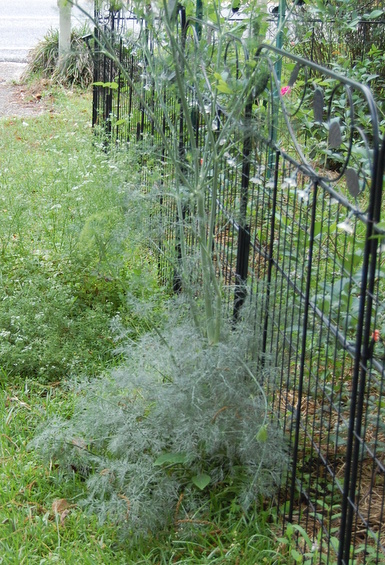
As we have increased our gardening each year either perennial or annual, we find that we are being gifted unexpected edible plants. Not by humans but naturenories. We were gifted this beautiful dill and behind that is a large cilantro.
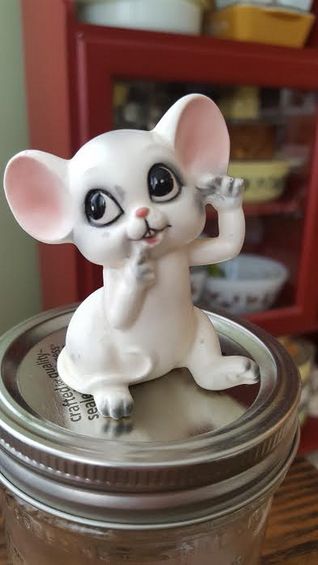
A naturenories is a made up name for the little critters that run around the yard when you are not looking and plant seeds, or eat seeds. This is "Mouse" he will be helping me out to make a few points today.
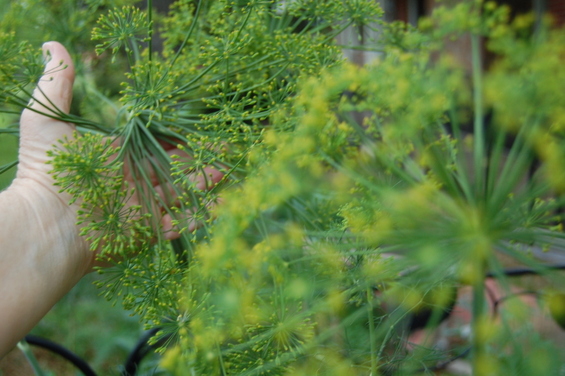
We are letting our gifted plants seed so the gifts can be spread around where ever they may. This is the dill and it is so beautiful and is over five feet tall.

And then the real surprise this year. Sweet potato vines/slips coming up out of a tiny space where Ajuga is growing. Since we cannot harvest sweet potatoes here in this tiny space we will attempt to dig out this gift and hopefully plant and make a nice harvest. We are not sure how this got here unless it was from a container we had last year near this location.
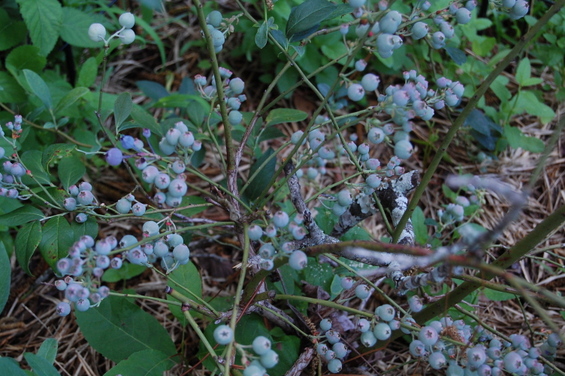
And this leads me to food preservation.....
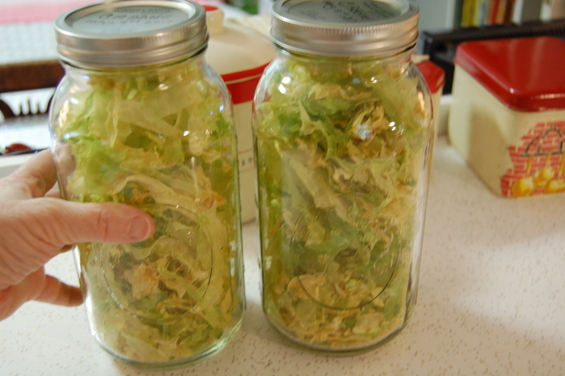
We are losing our way as we travel through time. Our ancestors knew how to preserve food and a lot of their daily work, if not most of it, was around food. It took a lot of effort to grow and preserve food considering the lack of refrigeration and and utilities we have today.

So for an example lets go and pick a fruit or vegetable, just one and come inside. We hold that fruit/vegetable in our hand. This could have come from the grocery store too but either way we have it in our hand. We either eat it, preserve it or let it rot and throw it into the compost bin or garbage can.
There is much food waste these days and people are careless with precious food as well as resources. Once we buy or harvest the food it is going to start decaying so we need to save this food.
We do not have our generations that knew so much about food preservation around us anymore so we all need to bring it back and learn all we can so we can teach our children like it was taught to our generations before us.

I am trying to learn more about fermenting because my mother did not do a lot of that but fermenting can be a healthy alternative to use the food before it spoils.
This is shredded carrots above.
Fermenting is getting easier because of modern helpful tools such as glass pickle pebbles, there is one in the jar above.
And jar nipples to put on top of the jars so the ferment can burp.

There are food dehydrators today that make dehydrating easy and are such a benefit to have for preserving food. Dehydrating food is one of the oldest ways to preserve food. The sun was, still is and can be used to preserve food. The food dehydrator is a convenience to have.

Mouse says to keep your dehydrator clean and go by the books and this is a good way to preserve your food. Of course not mouse.
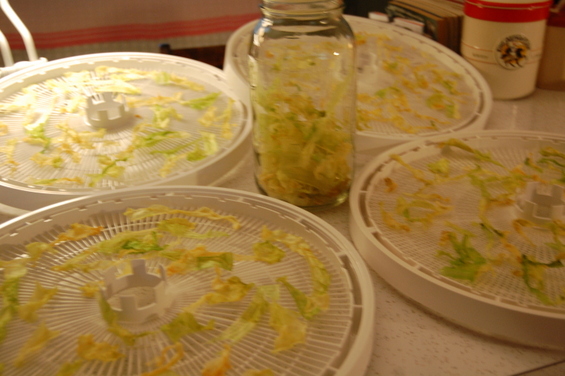
Cabbage after being in the dehydrator.
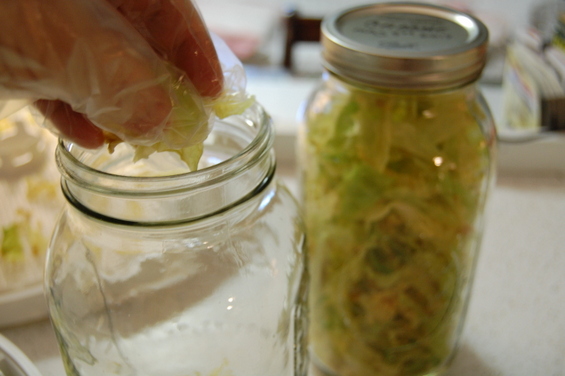
I use gloves for packing the dehydrated foods so no moisture touches the food after dehydrating. Also I sterilize the jars and air seal them after filling them with food that has been dehydrated.

This is dehydrated cabbage... it is not burnt, the whitish thicker parts of the cabbage turn this color as the moisture is removed. The color goes back to normal after rehydrating.
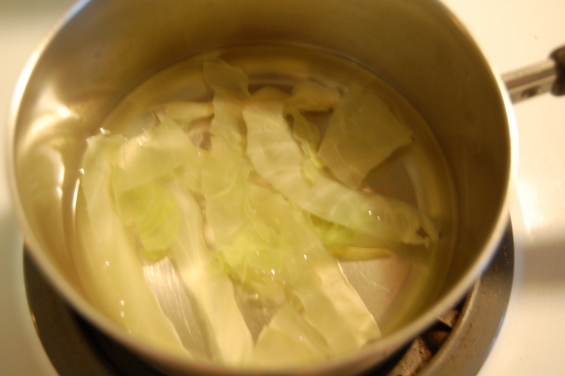
Same cabbage rehydrating in water that was brought to a boil and simmered.
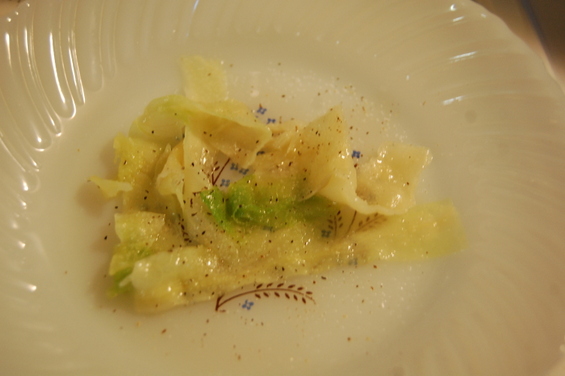
The same cabbage cooked and would be very good in a stir fry. The good thing about dehydrated food is the washing, chopping, blanching is already done and now it is a convenient food.
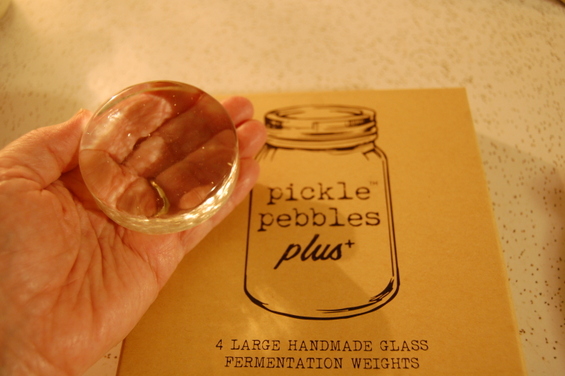
This is what a pickle pebble looks like. A weighted glass round that goes into your canning jar for fermenting food. It holds the food under the brine.
Also water bath canning and pressure canning is another way to can food. I grew up in the canning era and so did not know a lot about fermenting and dehydrating but I am learning now because I feel we need to start preserving our food and rotating it and living more like the generations before us did.
Charles and I have talked and feel like we need to do more, to do better with preserving our food. We have more available information today about food preservation and can preserve food in different ways so we have ordered some good books and I am stretching to learn more.
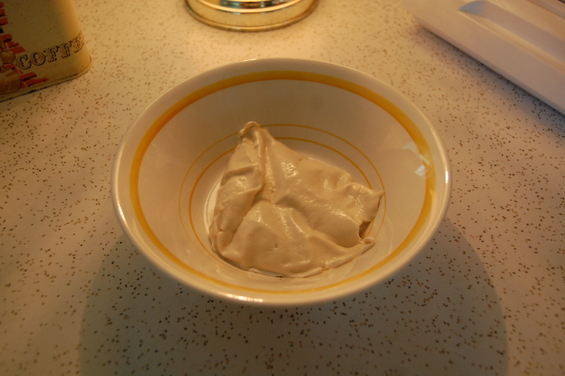
I know this is a long post but just one more thing. This is our "Pascal", that is the name I gave our sourdough starter. Pascal is 8 years old now. I put him in a coma for a year and half in the freezer. I simply got lazy after feeding him for over six years so I put him in the freezer. With all the fermenting and learning about healthy ferment I decided to bring Pascal out of his coma if that was possible. He is thawing above.
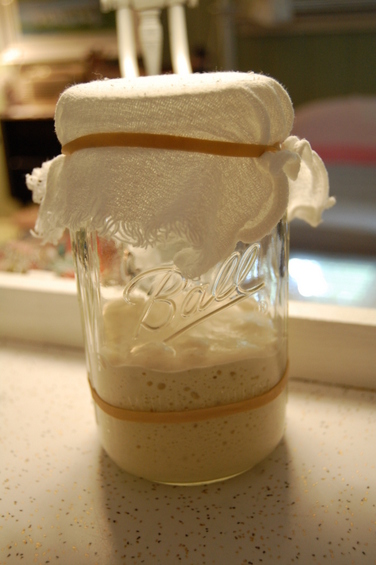
After Pascal thawed I feed him and then 24 hours later to my surprise he started rising. :) I always feed pascal more flour than sourdough starter. Such as 1/4 cup starter to 1/2 cup flour and a bit more than 1/4 cup spring or filtered water.
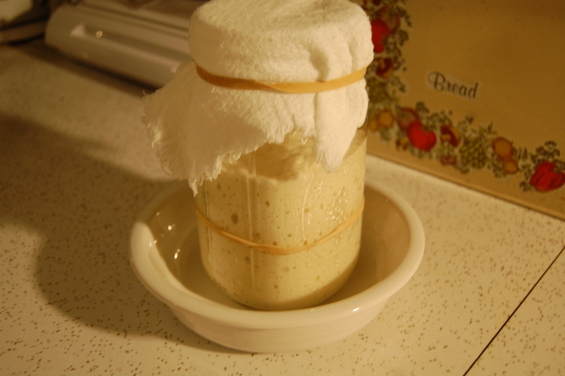
After reaching this height from the rubber band up he deflated as he is suppose to do..... So I fed him again....

And in only 48 hours Pascal is back to being a healthy starter that smells wonderful! I made Pascal from just water and flour after many tries one took and it was Pascal. So we are back to eating sourdough bread starting tomorrow.
I am just sharing with you what we do so you can do this too. My suggestion is follow trusted books and information. For dehydration I like the book called The Ultimate Dehydrator Cookbook by Tammy Gangloff, Steven Gangloff and September Ferguson. I use this book because several years ago I found youtube videos that Tammy made and I could tell she really knew what she was doing. After doing this for a long time she wrote a book. I am not getting paid to tell you this, it is just a book I like. Also another book I am reading for fermenting is called Fermented Vegetables Kirstin K Shockey and Christopher Shockey.
We are still living our old fashioned life but we are trying to learn new things because we feel like we we need to do more to be able to weather the storms that we have today.
You can do this too, Grandma Donna


